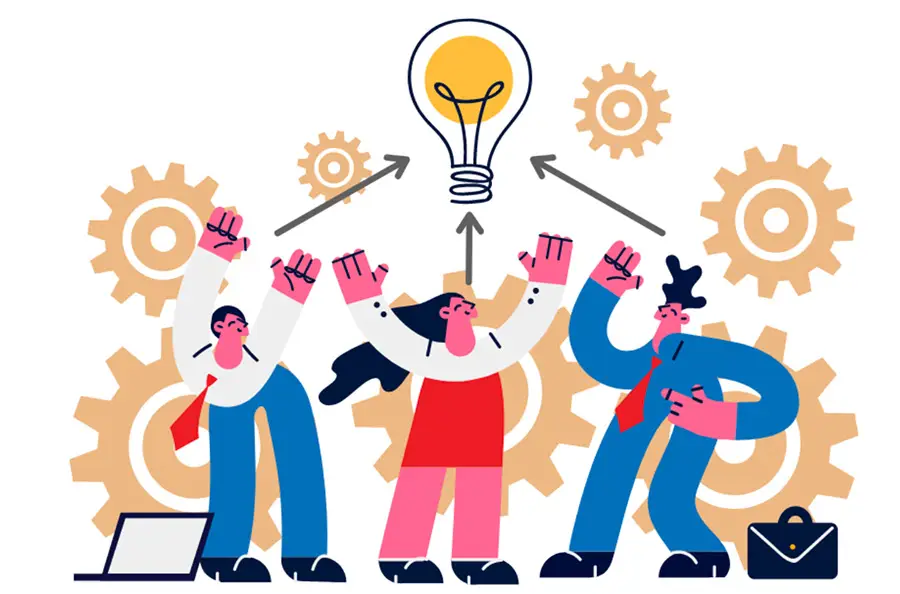
Currently there are five generations at work in almost every organization, and they have an enormous range of experiences and influences.
The oldest is the “silent generation,” – also known as the traditionalists – born between 1928 and 1945. As children they most likely experienced the impacts of the Great Depression and WW2, and were alive before the miracle drug penicillin was created.
The next generation, the much talked about Baby Boomers, were born between 1946 and 1964. I’m a Boomer. Memorable events in boomer’s young lives included the Vietnam War, the Civil Rights movement, and the beginning of the Cold War.
Gen Xers were born between 1965 and 1980 saw the introduction of personal computers and the end of the Cold War.
The next younger group are Millennials, born between 1981 and 1996, and who were exposed to the first smart phones, video gaming and a massive technology boom.
And then finally, Gen Z, the youngest of the five generations, who have never known a time when people didn’t have smart phones, cloud computing and video streaming.
Today, Millennials and Gen Z right now make up 38% of our global workforce. In six years, by 2030, all projections are saying that they’ll be close to 60% which is kind of mind blowing.
Stereotypes and Generalizations
Of course, with multiple generations coexisting in the workplace, stereotypes and generalizations abound. You’ve likely heard many of these:
- The Silent Generation/Traditionalists: Conservative, loyal to organizations, respectful of authority, old school, resistant to change
- Baby Boomers: Strong work ethic, not tech-savvy, highly competitive, career-driven
- Generation X: Independent, adaptable, cynical, disengaged
- Millennials: Tech-savvy, ambitious, socially conscious, self-absorbed
- Generation Z: Digital natives, entrepreneurial, focused on DE&I, lacking people skills
But these stereotypes are extraordinarily simplistic. In fact…
“Stereotyping is the real workplace villain. For every person who fits the stereotype, I can show you somebody else who is exactly the opposite of that stereotype.” – Gregg Ward
The reality is, these generational differences are often overblown by the media. They make for easy little boxes to put people in – because that’s what human beings do. But, if we think about it, we know that stereotypes can seriously undermine good relationships at work.
We all progress through different phases as we go through life. Was I a super ambitious Boomer when I was younger? Yeah, I really was. To the point where I offended people with my ambitions. As I’ve matured, I’ve learned that keeping my head down and doing a good job is a better way to succeed at my goals than constantly telling people how great I am and about all of my achievements.
We all experience diverse experiences and expectations and influences at all sorts of different times in our lives. Sometimes we don’t have epiphanies about what it means to be a human being until we’re in our sixties or seventies or even older. So, all of these experiences contributed to what makes us unique. And stereotyping only just undermines all of that.
Five Shifts for Multigenerational Workplaces
So how can we foster understanding, respect, and collaboration across generations? Here are five key shifts you can make individually, and in your organization, to make a significant positive difference:
- Use Reflective Listening Reflective listening is about making the other person feel heard and understood. Before offering your own thoughts, restate their perspective first to confirm you’ve grasped it before sharing your own.
- Create Psychological Safety Teams with the highest levels of psychological safety, where people aren’t ostracized for their differences and ideas are considered without ridicule, are most likely to succeed. Ensure everyone feels welcomed and equally valued, regardless of generational differences.
- Acknowledge Emotions Use the HEAR technique to de-escalate emotional situations: H – Hear the Emotion in their voice A – Acknowledge that emotion R – Offer Respectful remarks
- A Coaching Mindset Rather than telling people what to do, put on your coaching hat. Ask questions that allow them to gain insights about themselves and what they’re trying to achieve.
- Constructive Feedback Use the SBIR framework for delivering feedback: S – Situation B – Behavior I – Impact R – Request
Organizations that implement these five behavioral shifts see increased collaboration, communication, efficiency, and respect. And don’t forget the Platinum Rule: Do unto others as they would have you do unto them.




